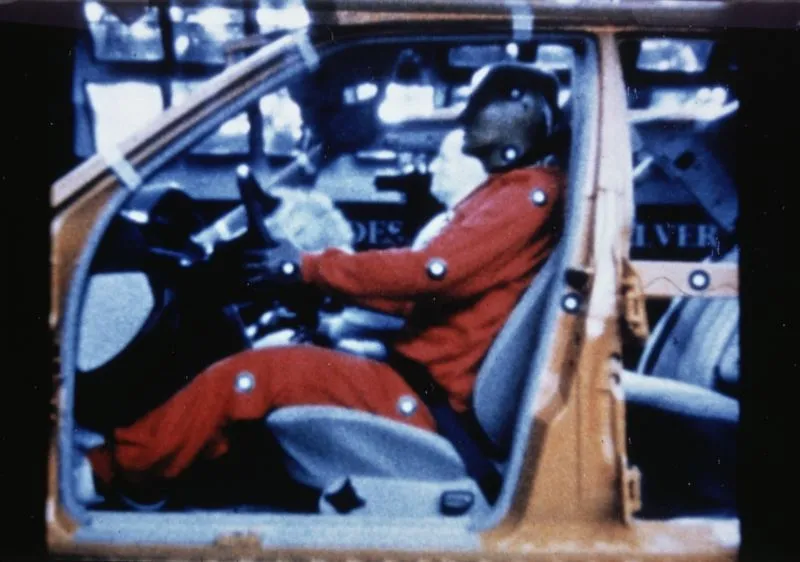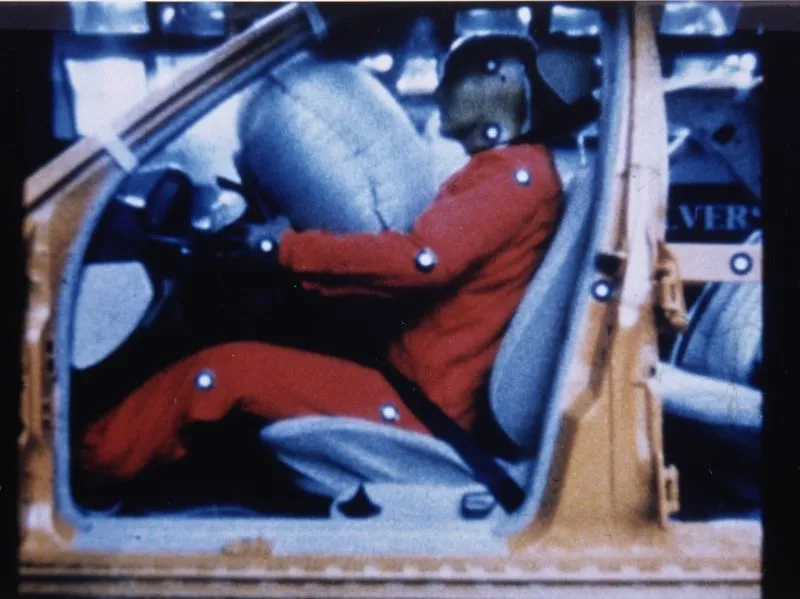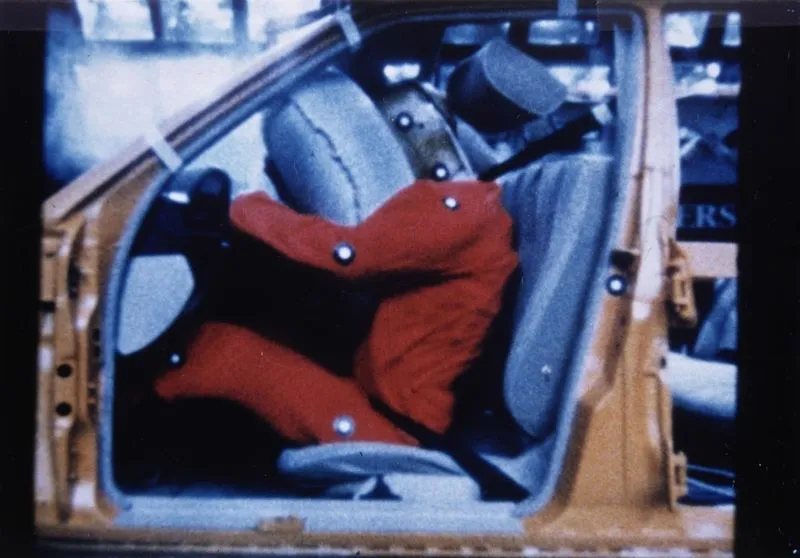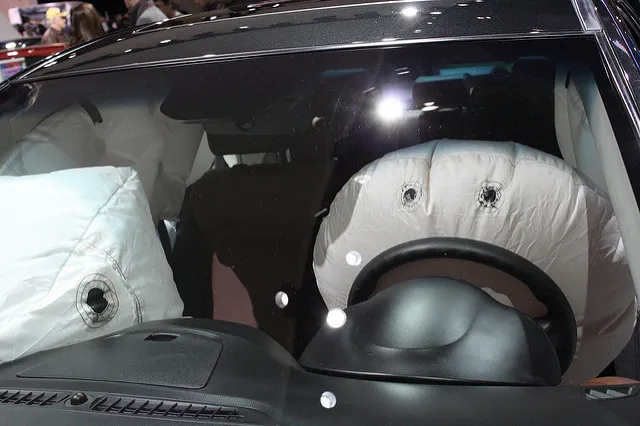Due to civilisation and modern day living conditions, it is now a norm for people to use one form of transport or another to get to another destination.
The three mode of transport is sea, land, and air transport. Out of that, the passenger transport via automobile comes first at 16,000 billion passenger-km, with the least being rail at 250.
The World Health Organisation puts the global number of road traffic deaths in the year 2013 at 1.25 million. This statistic is a staggering 3,400 deaths daily.
The motor vehicle accident is a leading cause of deaths in young adults aged between 15-29 and is rated the 9th cause of death for all ages globally.
The number could have been worse without the use of seatbelts and airbags.
Airbag
An airbag is a flexible inflatable fabric cushion installed in vehicles which by design rapidly fills with air during an impact when triggered by a sensor.
Ever since the invention of airbags, the mortality rate by vehicle accident had dropped to 24% worldwide, and 63% in the USA within the year 1992 to 1997 according to this report.
A little history
Until 1951, vehicles do not have airbags installed in them. But an American inventor and engineering technician, John Hedrick, patented one in 1951 which he named a "safety cushion assembly for automotive vehicles."
But the only interested car companies were General Motors (GM) and Ford. The GM car manufacturers later went on to be the first to deploy airbags, commercially, in their Oldsmobile and Buick automobiles from 1975 to 1976.
But other car companies were dragging their feet. It was in 1998 that it was made mandatory for all vehicle to have airbags installed.
Why airbags?
We will have to revisit one of the laws of physics made in the 17th century by Isaac Newton and published in 1687. The Newton's laws of motion are three, but for the post, we are only interested in the first law of motion which is sometimes known by the name of Law of Inertia.
Inertia is simply the tendency of a body to resist a change of motion but rather to continue in the direction of motion.
The first law was pretty straightforward; it states a body in motion will continue in motion, while an object that is at rest will remain at rest unless an external force acts on it.
We obey this law in our daily lives. The side body movement we experience when a car takes a corner or negotiates a sharp turn a little too fast.
The feeling of being "sucked" back into the car seat when an automobile does a rapid acceleration. The inertia makes the body to continue at rest, but the forward motion of the acceleration counters that.
Even while relaxing at home and the public power supply suddenly goes off, something very familiar here in my country, you will notice the electric fan continue rotating until it gradually comes to a halt.
The airbags keep the passenger safe from home as it inflates and cushions the forward thrust when an automobile was suddenly forcefully brought to a halt by an impact/collision.
How it works
| 1 | 2 | 3 |
|---|---|---|
 |  |  |
[Image Showing Airbag Dummy Test from Diamler Chrysler AG via Wikipedia Commons: 1,2, and 3
But due to momentum from motion, a sudden stop, even when the seatbelt keeps you strapped in, will force the head, which weighs a surprising 3-6kg to hurtle forward (see the image of the dummy). The airbag once inflated, prevents the head from smashing into the steering.
The reaction of the air that inflates the airbag is super fast. It is between 20 millisecond and 40 milliseconds. How do we get such rapid inflation in such a very short time?
This air is not from a compressed gas source instead it is from a chemical reaction. I know the automobile may be the last place to think of chemistry, but there you have chemistry to the rescue.
In the early days of the airbag technology, inflating the bag involve the use of compressed air stored in a tank. That was the practice until 1968 when John Pietz, a chemist pioneered the use of solid-state sodium nitride (NaN3).
When it comes to the airbag technology, timing is everything. If it deploys too slow, the driver and passenger safety is at risk.
Here, the crash sensor plays a critical part. The sensor is a steel ball that slides inside a smooth bore housing. Usually, the ball is held by a permananet magnet or a spring which secures the ball in place as the vehicle navigates over potholes or uneven roads.
But when the car suddenly decelerates as a result of a collision or impact, the ball goes free and slides along the bore to activate an electric circuit which initiates the airbag's inflation. All this as I mentioned before happens in the milliseconds (not more than 40ms) time range.
The inflation is not a result of compressed air but rather as a result of a chemical reaction which generates gas inside the airbag.
The airbag has three chemical components whicch are silica (SiO2), Sodium azide (NaN3), and pottasium nitrate (KNO3).
Reaction One: 2NaN3 → 2Na + 3N2
About 130mg of sodium nitride (2NaN3) can produce up to 67 litres of nitrogen gas needed to inflate a standard airbag.
The sodium azide (2NaN3) decomposes under heat to produce sodium (2Na) and nitrogen gas (3N2).
Of the two chemical products, sodium an alkali metal, can cause severe burns to skin or eye contact.
To prevent that from happening:
Reaction Two: 10Na + 2KNO3 → K2O + 5Na2O + N2
The sodium is made to react with potassium nitrate (2KNO3) and the products are potassium oxide (K2O , sodium oxide (5Na2O), and nitrogen (N2), which produces more nitrogen as well.
The potassium oxide is harmful too so a further third reaction gives:
Reaction Three: K2O + Na2O + SiO2 → Na2K2SiO4
The final reaction produces a harmless white powdery substance known as alkaline silicate glass (Na2K2SiO4).
Conclusion
There has been attempt pioneered by Honda with research on the subject from 1990. The airbag is to lessen the severity of the rider forward throw from the motorcycle in the event of a collision.
You can visualise the effect of the collision when riding on a motorcycle by taking a look at this gif. Since most injuries and deaths are mostly from the riders getting either thrown under a vehicle or onto incoming traffic, this measure appears useful.
The National Safety Council has an estimated 1040 lives saved in the USA in 1998 as a result of airbag use. The same year also, 100 children lost their lives as a result of improper fastening of seat belts and placing children in front seats.
The right sitting position and use of seat belts, which apart from restraining us also places one in the right spot for the best possible protection in the event of a crash. I survived this accident because I was wearing a seatbelt.
REFERENCES
- Epidemiology of motor vehicle collisions
- List of countries by traffic-related death rate
- Mode of Transport
- Airbags
- Encylopedia:Airbags
- Scientific American: How Airbags Work
If you write STEM (Science, Technology, Engineering, and Mathematics) related posts, consider joining #steemSTEM on discord here. If you are from Nigeria, you may want to include the #stemng tag in your post. You can visit this blog by @stemng for more details. You can also check this blog post by @steemstem here and this guidelines here for help on how to be a member of @steemstem. Please also check this blog post from @steemstem on proper use of images devoid of copyright issues here



